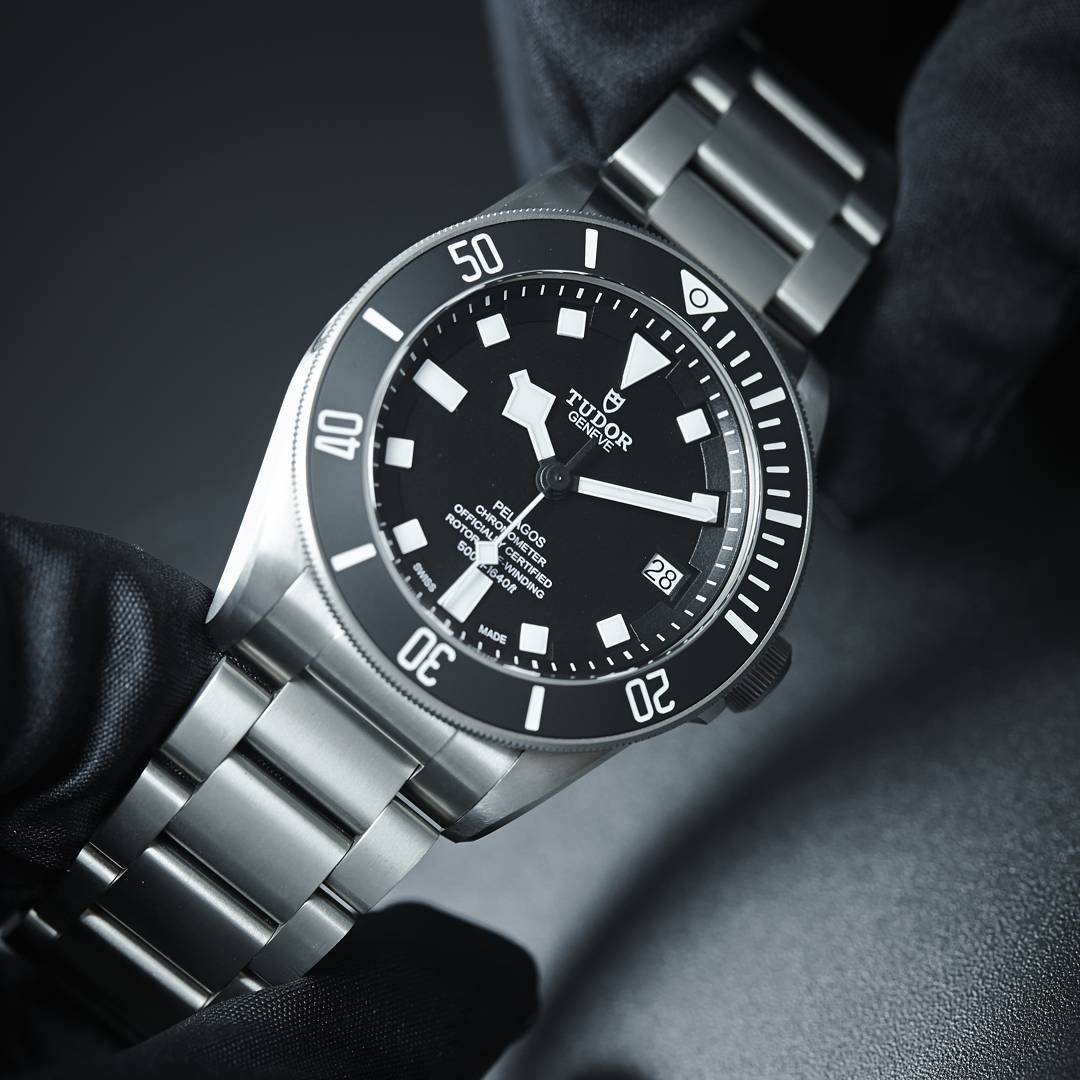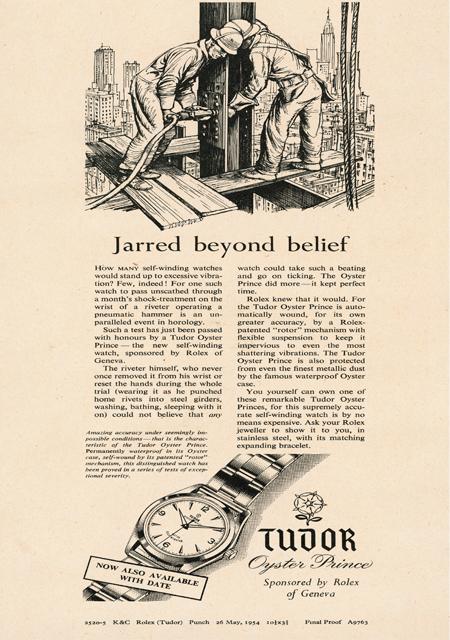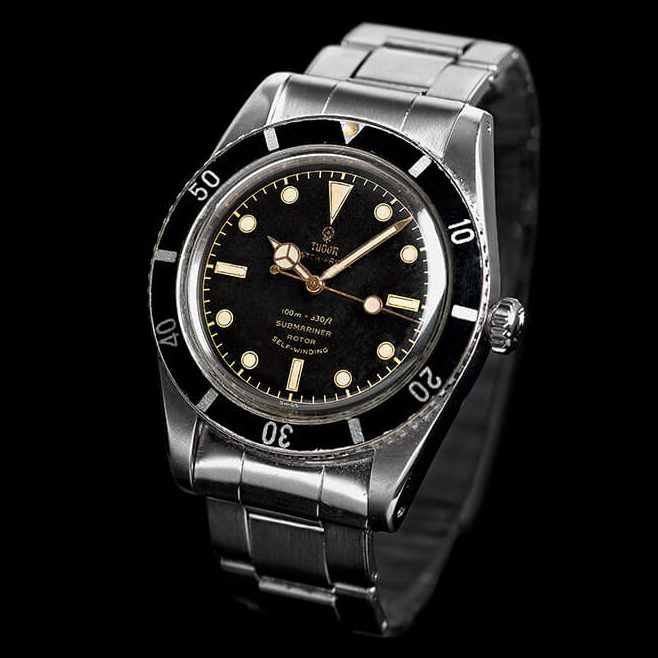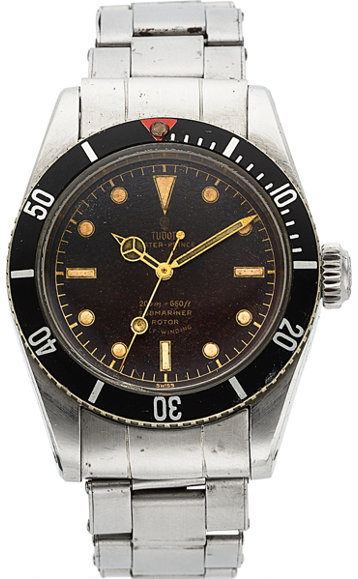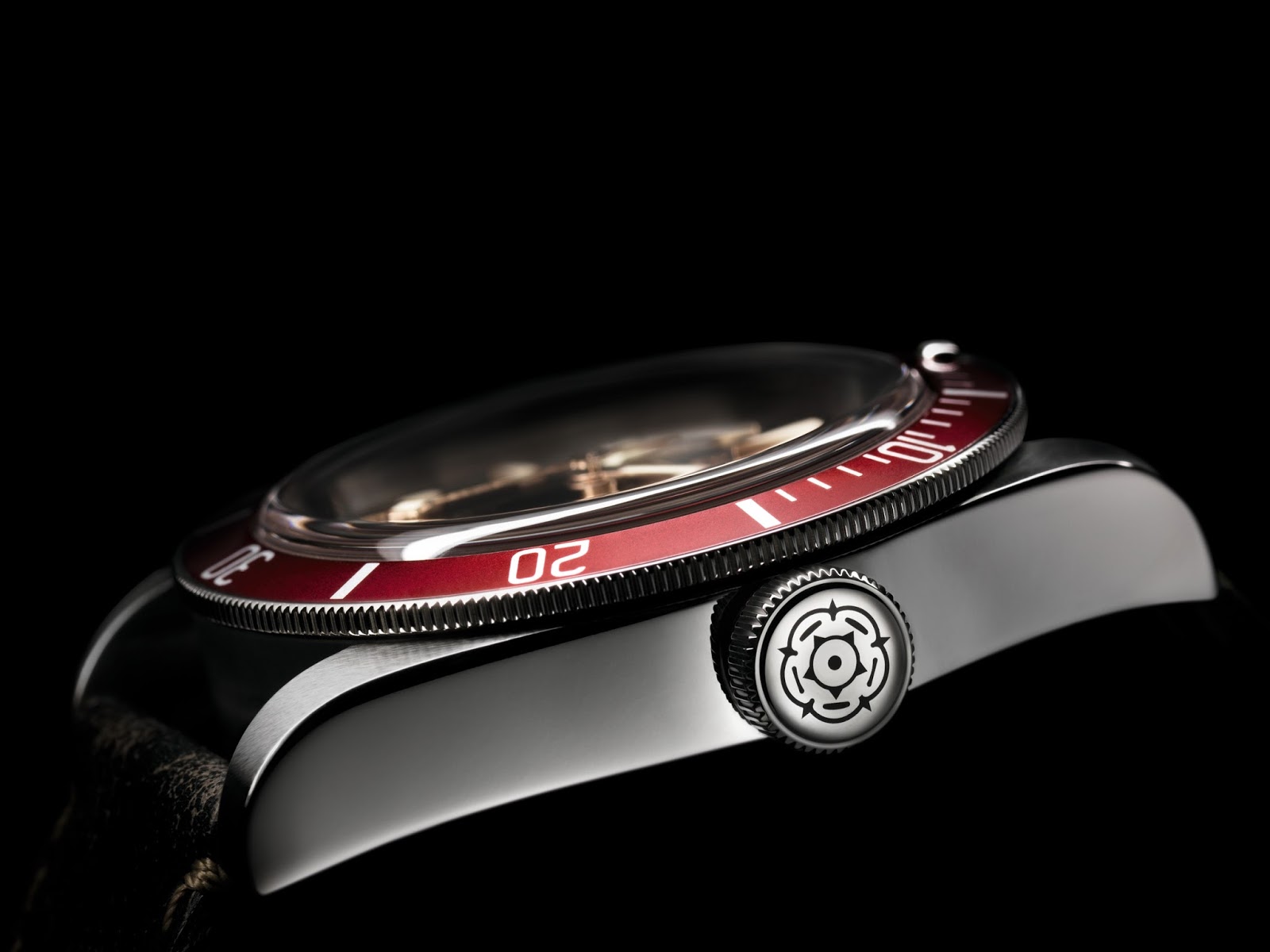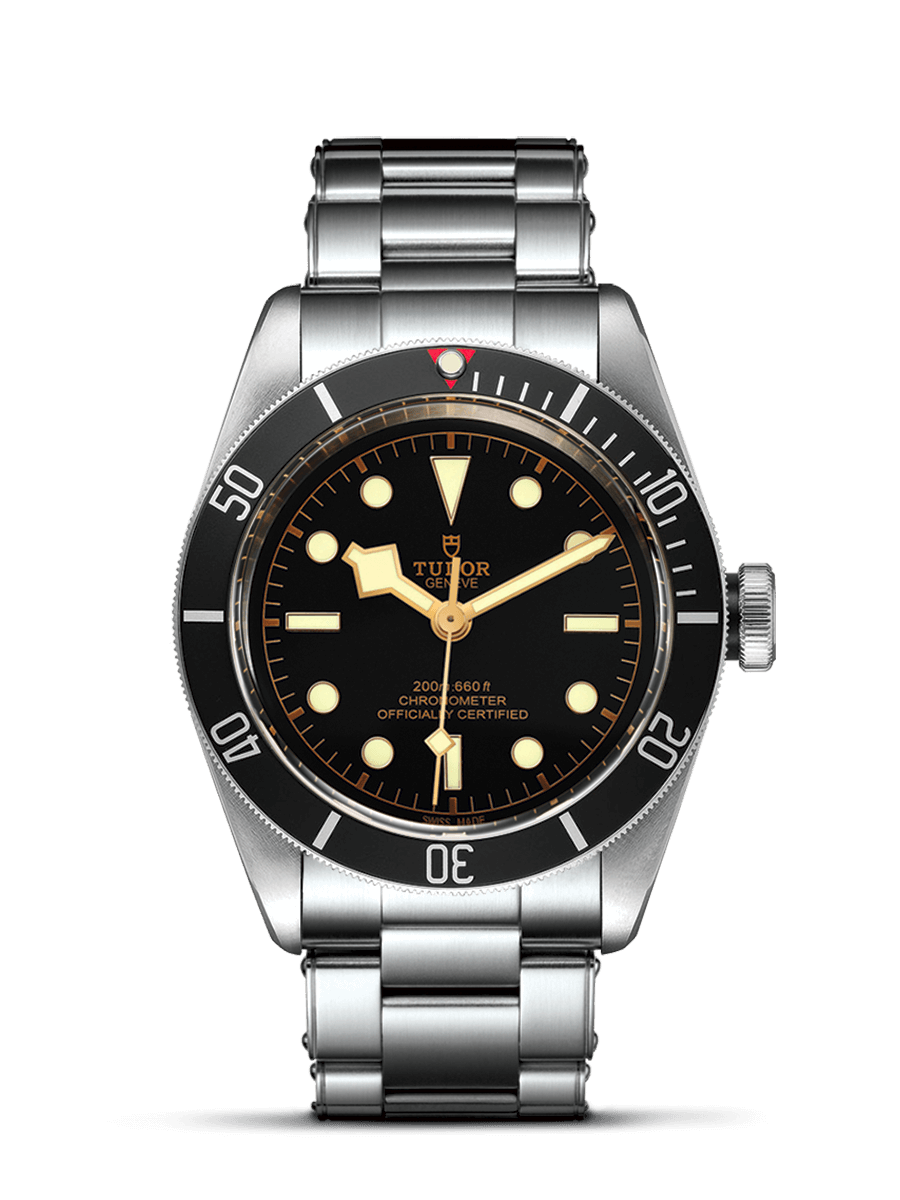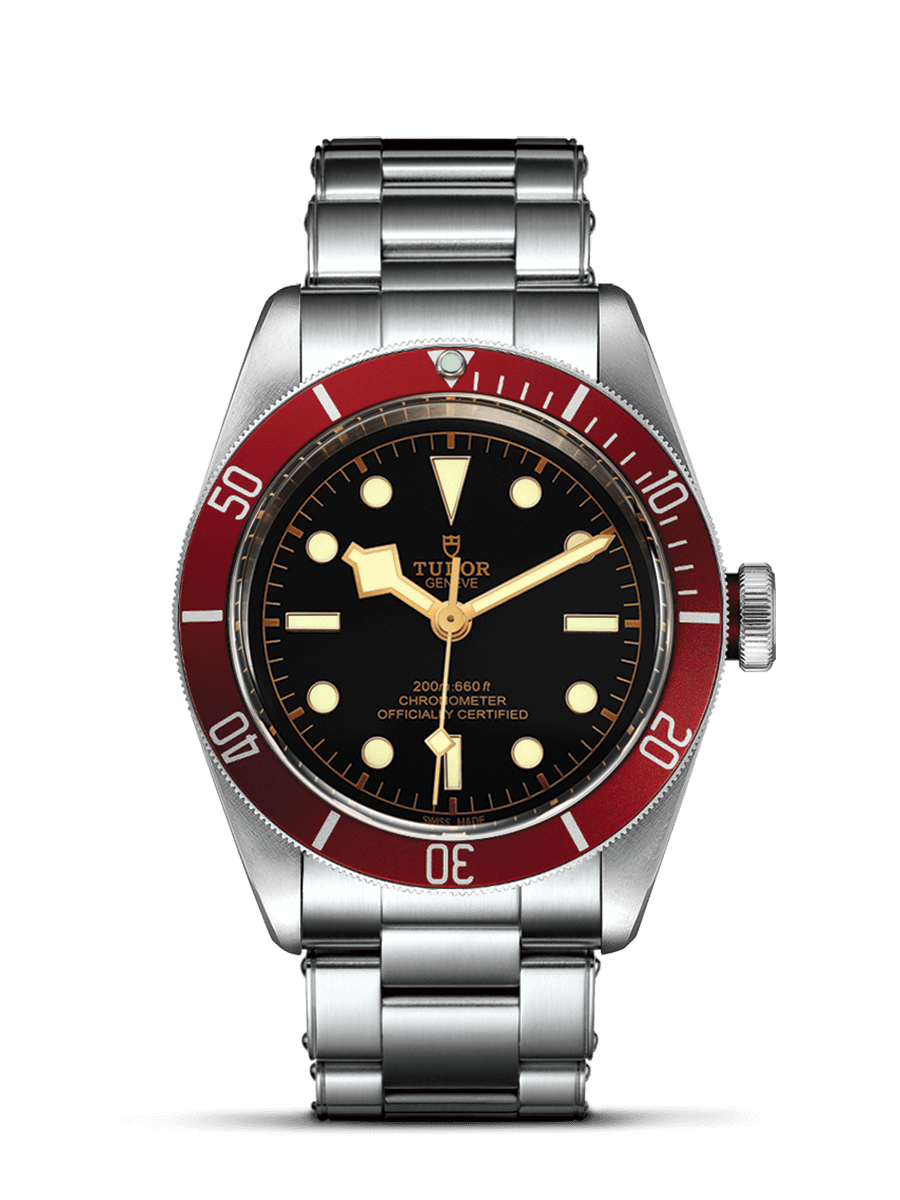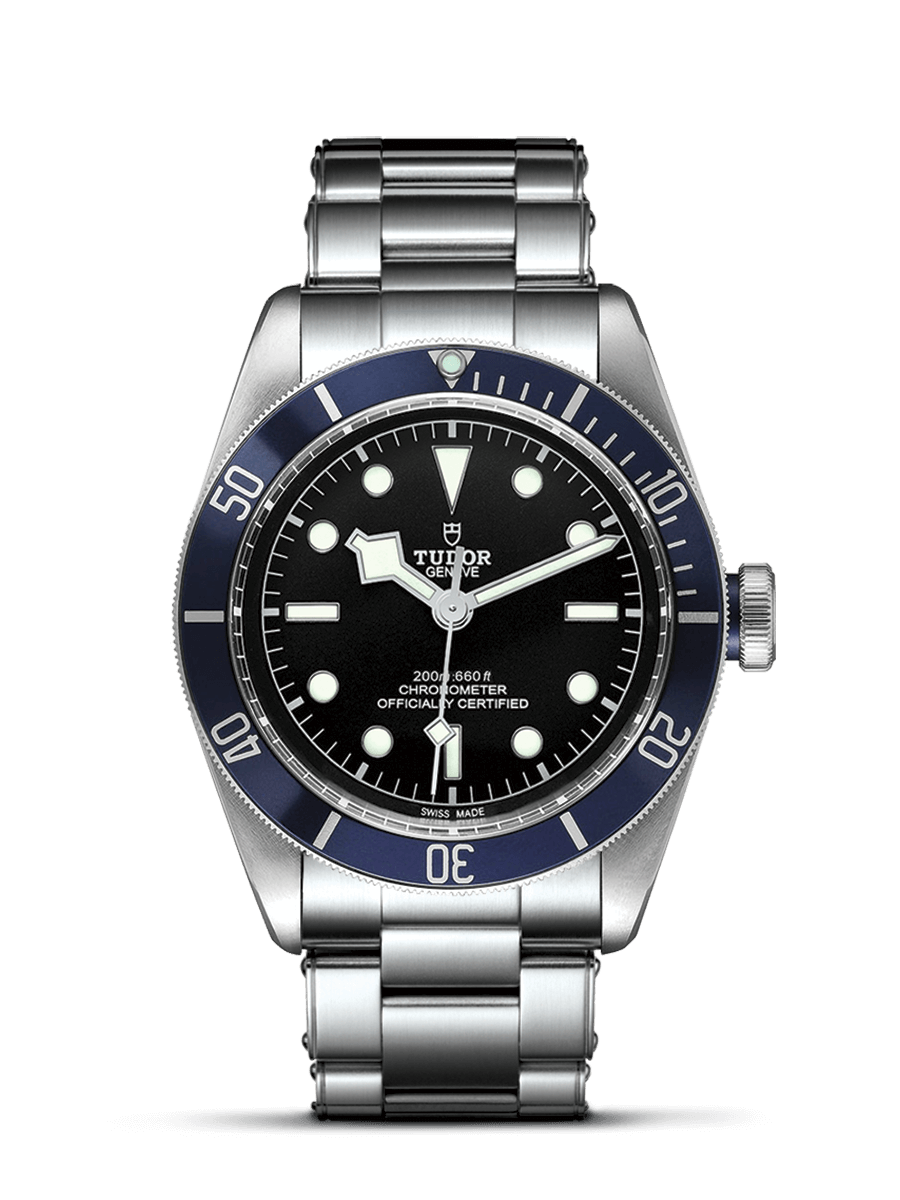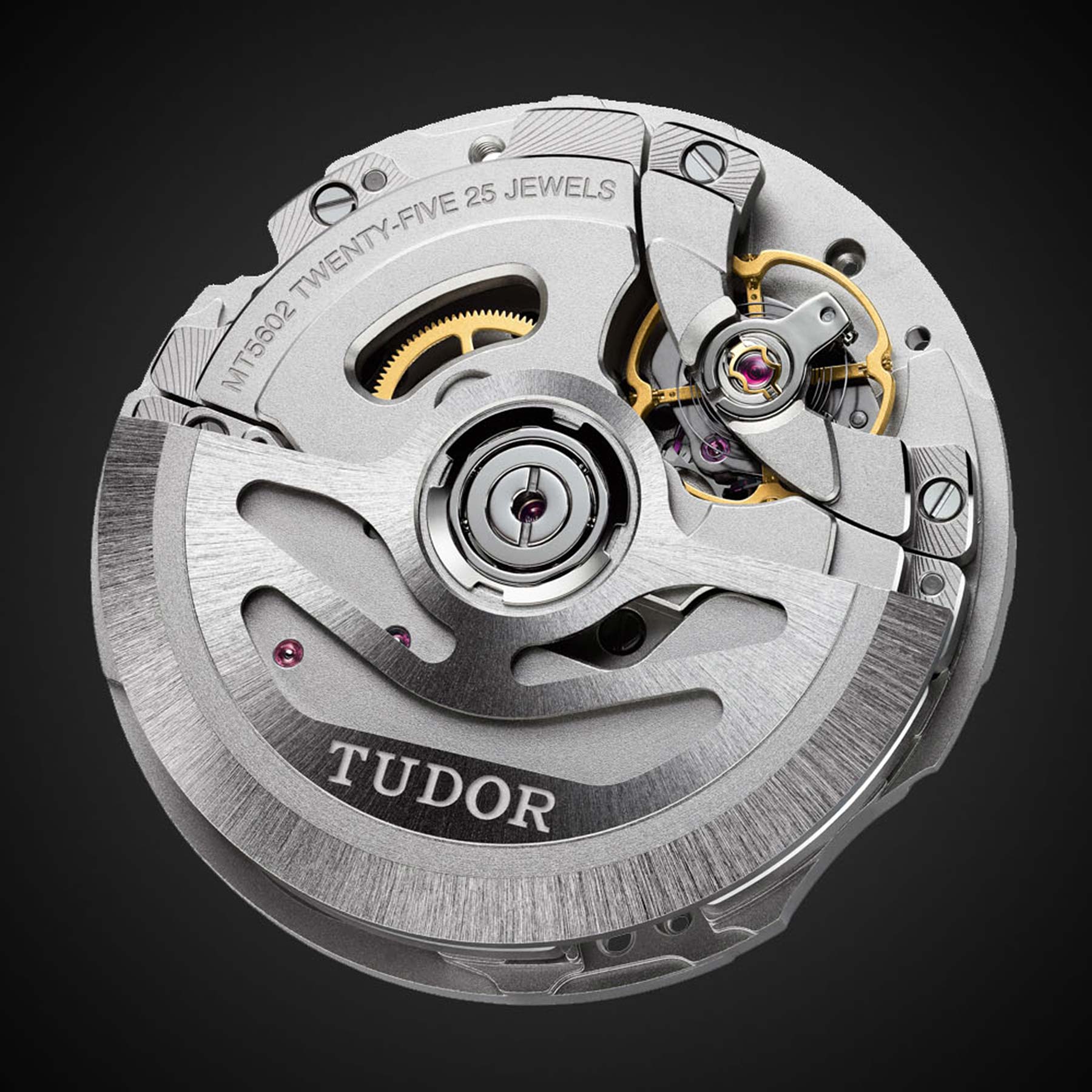When it comes to dive watches, the Tudor Black Bay Ref 79230 is a very attractive option. Eye-catching yet understated vintage aesthetic. Manufacture movement. And let’s not forget the accessible price point. Yet, some people still insist on referring to Tudor as a poor man’s Rolex. Or Rolex junior. Or something else silly like that. The fact is, Tudor stepped out of the very large shadow of its elder sibling years ago. And watch fans have been reaping the benefits ever since. So, is the Tudor Black Bay the best dive watch for your money? Read on and decide for yourself.
Understanding Tudor Dive Watches
Tudor offers two main dive watch options. Both inspired by its historic Submariner models. The technically-focused Tudor Pelagos offers a modern take on the purist dive watch. Most would agree its best in class when it comes to the performance to price ratio. The design is a little vanilla though. Meaning it’s likely not a watch you want to wear every day.
- The technically focussed Tudor Pelagos.
The other – more popular – option is the Tudor Black Bay. This is a dive watch designed for the mainstream. Meaning people who want solid dive watch functionality. But who also want to wear their watch daily. With a suit, to the gym, out to dinner, and so on. The spec sheet is not as impressive as that of the Pelagos of course. Yet it’s not like you’re getting short-changed in this department either. Something we will look at in more detail shortly.
There’s also the Tudor Black Bay Chrono. The Tudor Black Bay GMT. And the curious Tudor Black Bay P01. But these are all variations on the same theme. So, for the purposes of this article we will focus only on the Tudor Black Bay Ref 79230.
A (Very) Brief History Of The Tudor Black Bay
Offering accessible price points and attractive watches, Tudor is popular with younger demographics. Which leads many to assume it is a young brand itself. In fact, Tudor is more than 90 years old. The trademark registered on the behalf of one Hans Wilsdorf in 1926.
It wasn’t until 1936, when Wilsdorf took over the running of the brand that things started to happen. In 1946, he created the “Montres TUDOR S.A.” company and began to market Tudor watches.
Unlike Rolex, Tudor watches used third-party movements. This allowed them to reduce manufacturing costs. And hence the price at retail. A big selling point. It didn’t hurt that Rolex guaranteed the technical integrity of every watch too. Along with distribution and after-sales service. (Some early models even carried the Rolex name as an assurance of quality.)
- A vintage Tudor Oyster Prince advertisement – complete with Rolex endorsement.
Tudor moved forward keeping step with Rolex advancements. It even adopted some of the model names, such as Oyster and Prince. And of course, Submariner. The Tudor Submariner Ref 7922 made its debut in 1954. Shortly after the Rolex version. It would go on to become one of Tudor’s best performing collections. Subject to continuous refinement and improvement over the ensuing decades.
Why am I telling you all this you ask?
Simple. The design of the Tudor Black Bay draws on these vintage Submariners for inspiration. Like a lot. In fact, it’s pretty easy to see the resemblance to all Oyster Prince Submariners from the 1950s and 60s. (Excluding a select few models that provided the inspiration for the Pelagos instead.)
The dial layout and basic bezel design of the Tudor Black Bay have their roots in the original Ref 7922. This includes the black dial. (Selected for legibility underwater.) The iconic arrangement of luminescent index shapes shared with the Rolex Submariner. The extra-large triangle at 12 o’clock. And the circular hour markers interspersed with rectangles at the 3, 6 and 9 positions.
- An Tudor Oyster Prince Submariner Ref 7922 from 1954 – Credit: Tudor Watch
There’s also the minute track boarded by a complete circle. A subtle detail was the thickening of paint at each 5-minute interval. The coin-edge, rotating bezel with 60-minute counter was also present from the start. Numerated for 10s, marked for 5s, and a triangle with luminescent dot for 60.
The next big influencer on the Tudor Black Bay is the “Big Crown”, reference 7924, which came out in 1958. (The Tudor Black Bay Fifty-Eight is a direct tribute.) It was significant for its oversized, unprotected crown, a key feature on all Tudor Black Bays. It was also the first Submariner to be waterproof to 200m (20 bar/ 660ft).
This was in part due to a new Tropic-type Plexiglas crystal. It was thicker and dome-shaped (for better resistance to water pressure). Today a domed sapphire crystal is standard on all Tudor Black Bays. (Excluding the Tudor Black Bay 32/ 36/ 41 range. That collection features slimmer cases designed for sliding under shirt cuffs.)
- A Tudor Oyster Prince Submariner Ref 7924 from 1958 – note the big crown – Credit: Heritage Auctions
The remaining features for the Tudor Black Bay come from the 1969 references, 7016 and 7021. The distinctive square-shaped hands known by collectors as “snowflakes”. A Tudor’s shield logo (introduced on these models to replace the rose). It a symbol of resistance and reliability.
Now that we’ve covered the origins, let’s take a look at the modern Tudor Black Bay.
The Tudor Black Bay Ref 79230
It’s hard to believe but the Tudor Black is already almost a decade old. Debuting in 2012, it is the watch that put Tudor back on the map. And got collectors excited about the brand again. The collection has grown a lot since that first burgundy bezel model with an ETA movement. And evolved too. A key highlight being the addition of the in-house Calibre MT5602 in 2015. Which we’ll discuss in more detail shortly.
What hasn’t changed too much is the aesthetics of this popular model. The steel case measures a comfortable 41mm and shows polished and satin finishes. Its height of 14.8mm is pretty reasonable for a dive watch. (Keep in mind that’s measured from the top of the domed sapphire crystal.)
The aluminum bezels are available in three colour variations; burgundy, black and blue. All have matte grained black dials with identical time-only lay-outs. The burgundy and black versions use rose gold-toned snowflake hands and markers. And a cream coloured luminescent coating. (Also known as fauxtina.) The combination results in a more vintage vibe. The blue version meanwhile is more contemporary in its styling. Although the vintage Submariner influence still comes through nice and strong.
- Tudor Black Bay Black Ref 79230N
- Tudor Black Bay Red Ref 79230R
Depth rating is 200m. More than enough for any dive watch enthusiast. On the side of the case is an oversized screw-down winding crown. It fits into an anodised aluminium winding crown tube in a colour matching the bezel. Engraved into the crown is the Tudor rose, finished with black-lacquer.
Turning the watch over you come face to face with a solid caseback. This is a good thing. Yes, some dive watches have sapphire casebacks – see the Omega Seamaster 300 for example. But this is sacrilege. Sure, it’s nice to be able to look at the movement inside. But a proper tool watch should have a solid caseback. And that’s what the Tudor Black Bay is.
- Tudor Black Bay Blue Ref 79230B
That’s not to say there’s not a nice movement inside to look at. Because there is. The self-winding Calibre MT5602 made its debut in the Tudor Black Bay at Baselworld 2016. It offered a big step up from the previous ETA-equipped generations. The power reserve went from a mere 38 hours to a respectable 70 hours. And it’s certified as a chronometer by the COSC, meaning it’s accurate to -4/+6 seconds a day.
A variable inertia oscillator with a silicon balance spring regulates the movement. It’s held in place by a traversing bridge fixed at both sides. This protects it against shocks and vibrations, or at least makes it more resistant to them. Thus helping ensure a consistent rate accuracy. That’s the theory at least.
- The Tudor Manufacture Calibre MT5602
What impressed watch lovers most about the new movement though wasn’t its architecture. It was the fact that Tudor didn’t use it as an opportunity to jack up the price. The new versions with manufacture movement only cost a few hundred dollars more. And that earned Tudor a lot of kudos.
Like all models from the brand, you get a lot of choice when it comes to the strap. The Tudor Black Bay is available with a steel bracelet. An aged leather strap with folding clasp. Or a fabric strap with buckle. My money is on the steel bracelet. It takes inspiration from the brand’s riveted bracelets from the 50s and 60s. And has a nice stepped construction. It closes with a folding buckle and safety clasp.
Price & Availability
The retail price of the Tudor Black Bay Ref 79230 is USD 3,675 on the bracelet. And USD 3,550 on the strap. All three colours are available at most authorized retailers. And you can find some good deals on the preowned market too.
Is It The Best Dive Watch For Your Money?
It would be foolish to answer this question with a definitive ‘yes’. There are a lot of dive watches on the market. Like a lot. Some stand out more than others. Be it for their design. Functionality. Heritage. Price point. The list goes on. Few manage to combine all these features into one watch though. Which is what the Tudor Black Bay offers.
Good looks. High quality construction and finishing. Manufacture movement. And more heritage than you can poke a stick at. All at a very reasonable price. Sure, some people will still make the Rolex junior comparison. But the fact is Tudor has moved out of the shadow of its sibling long ago. And savvy watch lovers are taking full advantage.
Technical Specifications: Tudor Black Bay Ref 79230
- Case: 41mm x 14.1mm height – stainless steel case, brushed and polished – domed sapphire crystal on the dial side – screwed steel back – screw-down winding crown – 200m water- resistance
- Dial: domed matte black dial with rose gold-plated applied indices and hands – uni-directional diving bezel in steel with 60-minute track printed on an aluminium insert available in black, burgundy or blue.
- Movement: calibre MT5602, in-house, COSC-certified – self-winding bi-directional movement – silicon balance spring – 4Hz frequency – hours, minutes, seconds.
- Bracelet: Steel riveted bracelet / Aged leather with folding clasp / Fabric strap with buckle
- Price: USD 3,675 on bracelet / USD 3,550 on strap.
This article by TheWatchLounge has been sponsored by our partner WatchBox.
